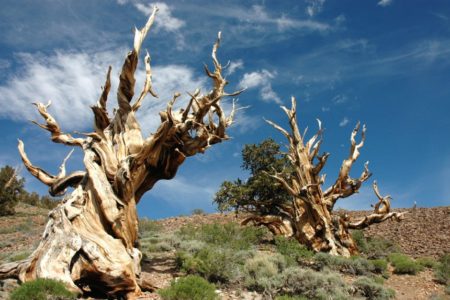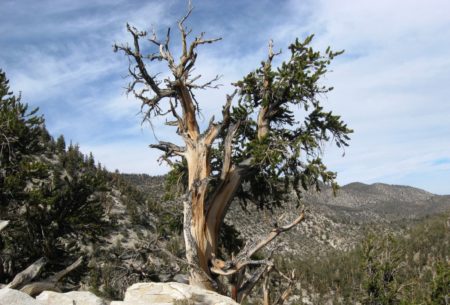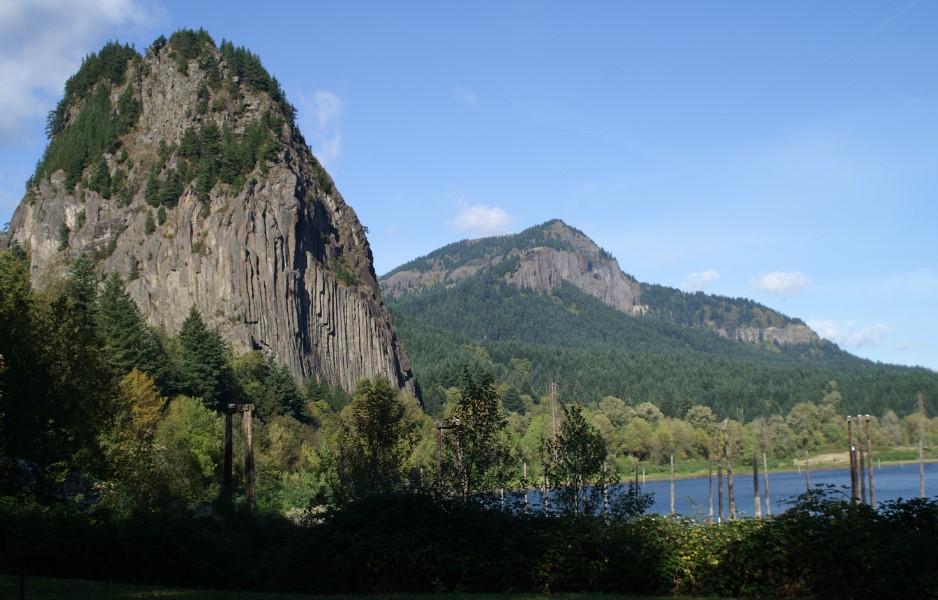At high elevations in a region of the western United States recognized as the Great Basin. Here is a species of Bristlecone Pines that lives a quiet, isolated, and exceptionally long life. Bristlecone Pines are famous for attaining great ages, have been found that have lived more than 5,000 years longer than any other non-clonal organism.
Bristlecone Pines are small to medium-sized windblown trees.
It is ranging from about 5 to 16 meters (15 to 50 feet) in height. Bristlecone pines grow in isolated groves just below the tree line; grow in soils that are shallow lithosols. It is usually derived from dolomite and sometimes limestone, and sporadically sandstone or quartzite soils. Dolomite soils are alkaline, high in calcium and magnesium, and low in phosphorus.
The trees are extremely hardy, surviving in harsh freezing cold temperatures, being buried in snow, and restorative powerful winds. However, in several cases, portions of the tree can die off and allow the tree to preserve its limited resources. Hence, Bristlecones aren’t very tall and every so often appear dead or very weathered.
Few other plants can grow in the hard rock. That Bristlecones prefer, and frequently the oldest trees are those that live in the most exposed and precarious places. Further, the Rocky Mountain population is sternly threatened by an introduced fungal disease. Which is recognized as white pine blister rust, and by pine beetles.
The bark of the Great Basin bristlecone pine is characteristically orange-yellow to light brown, whereas that of the Rocky Mountain bristlecone pine is typically gray-brown. The female cones are ovoid in shape and deep purple when young; they mature to a pale brown and bear a characteristic bristle on each scale.
Although, one thing they can’t last is chainsaws. In what is now the Great Basin National Park of eastern Nevada, a tree is known as “Prometheus” was being studied by a group of ecologists. Experts drill cores out of trees in order to count and measure the rings that chronicle their growth. Thus, much about the tree’s life and the ecological conditions in the area can be derived from these samples.
Unluckily, when Prometheus was drilled for a core, the tool used for this process broke off inside. The investigator needed his tool back and to get it, he had to cut the tree down. Once he’d retrieved his tool and the core from Prometheus, he was able to define that the tree had lived 4,862 years longer than any other single living organism.
Moreover, an older tree hasn’t been found since, though one recognized as Methuselah. It is believed to be about 4,850 years old and its specific location is also being kept secret. Most of the living groves of these trees are under better protection now. It can be visited in numerous locations throughout the Great Basin and in California.
The other two species, Pinus balfouriana, and Pinus aristata are also long-lived. Specimens of both have been measured or estimated to be up to 3,000 years old. The study of the wood of these ancient trees has revealed environmental conditions stretching back to almost 9,000 years ago.
Read More: The Devil’s Marbles of Karlu Karlu
















